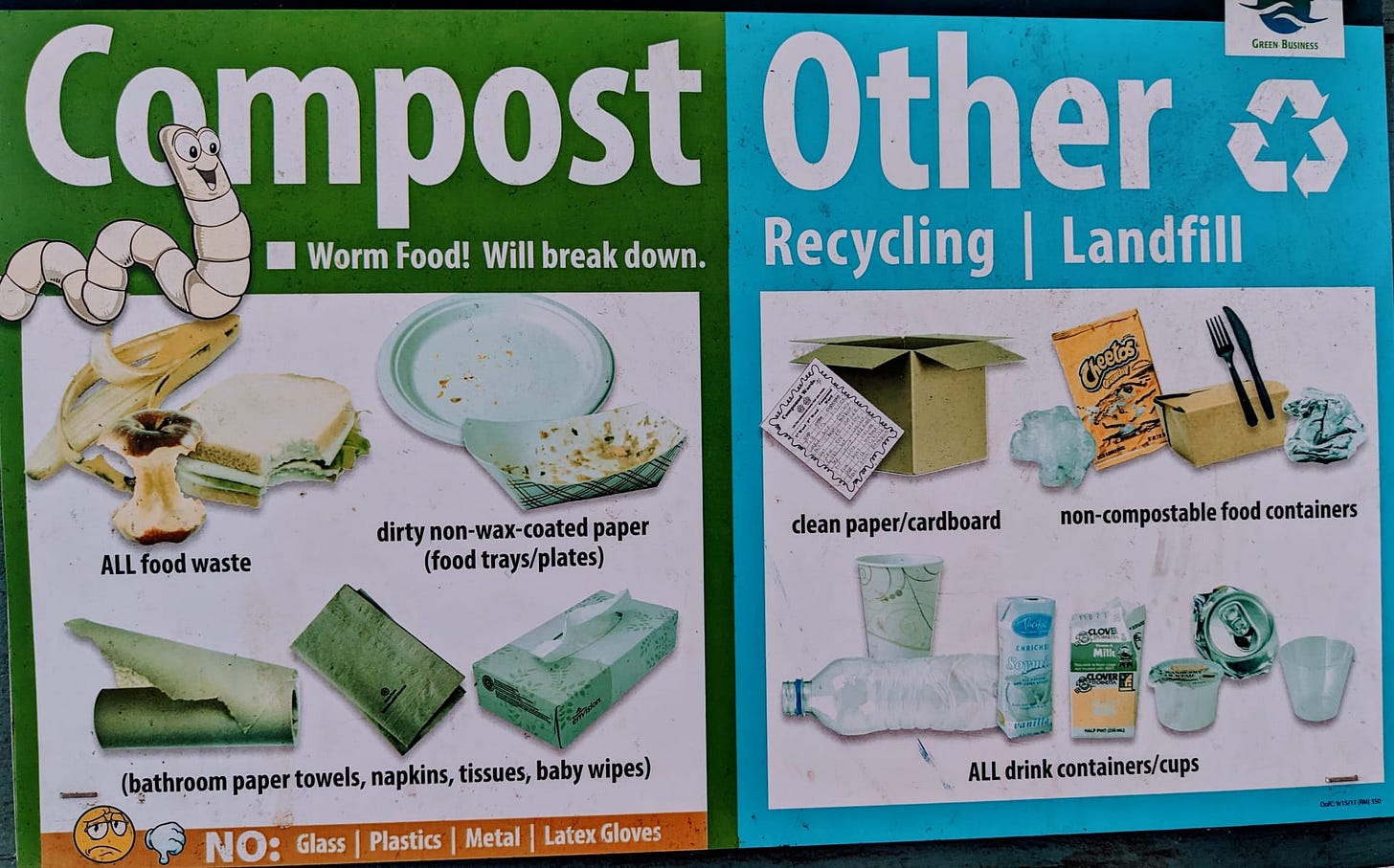This can be quite the head scratcher, thanks to the confusing (misleading?) nomenclature. Let’s “break it down”!
What are Compostable items?
Compostables are those that come from organic sources and break down into organic material, naturally, usually within 3-6 months. It is “stuff” that worms can eat. Simple!
Compostable matter breaks down naturally to form humus giving rich nutrients back to soil or water helping new life grow. Some examples are: fruit and vegetable scraps, egg shells, coffee grinds, organic garden waste, wood chips, tea bags, uncoated 100% paper plates, utensils made from corn starch or sugarcane, cork, dye-free hair, cotton.
What are Bio-degradable items?
Bio-degradables are those that break down naturally in an environment over an indeterministic timeframe. The key here being “indeterministic”.
Since bio-degradables do not break down easily, they might need industrial composting facilities to enable the process making it energy intensive. Some examples are: trash bags, diapers, most hygiene products, some cosmetics, adhesives, paper tapes, shoe soles, synthetic fabric.
What are BioPlastics and Biodegradable plastics?
Biodegradable plastics are petrochemical based (unsustainable) plastics, but modified to break down within a known timeframe only in a specialized environment of microorganisms, heat, and moisture. They are commonly used in single use disposable items, and can reduce time spent in landfills. Unfortunately the breakdown process of biodegradable is now known to produce toxic residue like “microplastics” that make their way into our food chain, water cycle and even our air causing serious health issues.
Bioplastics on the other hand, are those made out of renewable sources like vegetable oils and starches reducing the dependence on petroleum (fossil reserves) in the production process, and hence reducing the green house gas emissions in this phase. Unfortunately their production competes with land used to grow food, consumes pesticides and fertilizers, and the final product also scored high on in-vitro toxicity levels based on lab tests, just like their unsustainable counterparts.
So, which plastics are Recyclable?
The plastics that are recycled most commonly (still an energy consuming process) are:
HDPE used in milk jugs, detergent bottles and bags. Recycled into bottles, bins.
PET plastics used in bottles and food packaging. Recycled into clothes, carpets. Polyester, sportswear, jackets are made from this material.
PVC (pipes), LDPE (flexible plastic bags), PP (yogurt containers, bottle caps) can be recycled but they need special recycling facilities that may not be present everywhere.
Hopefully this short guide helps clarify what we are dealing with as consumers and make better choices towards eco friendly waste management. It's imperative to build and support a closed loop system in which materials are first reused to the maximum extent possible and only then recycled, minimizing waste and energy spent in the complete lifecycle, creating a circular and sustainable flow of resources.


